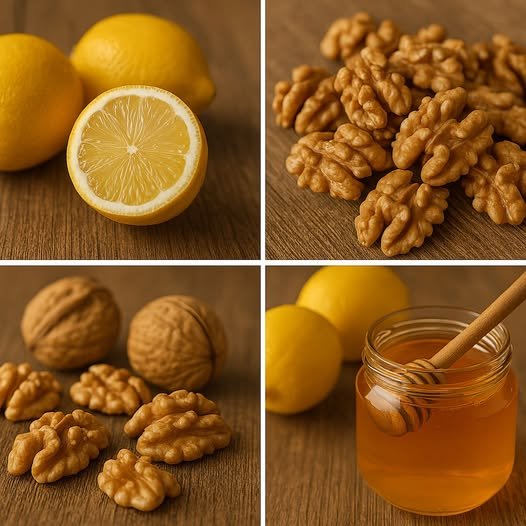Ground covers are an essential component of landscape design, especially when it comes to filling the spaces between pavers and pathways. These low-growing plants not only enhance the aesthetic appeal of your outdoor spaces but also provide practical benefits such as reducing erosion and suppressing weeds. Whether you’re aiming for a lush, green carpet or a tapestry of colorful blooms, choosing the right ground cover can transform your garden paths into a stunning feature.
Benefits of Using Ground Covers
Ground covers offer numerous advantages for garden pathways and pavers. They help prevent soil erosion by stabilizing the ground with their roots. These plants also act as a natural weed barrier, reducing the need for chemical herbicides. Additionally, ground covers can improve soil health by retaining moisture and providing organic matter as they decompose. Aesthetically, they add texture and color, creating a seamless transition between hardscape and softscape elements.
Factors to Consider When Choosing Ground Covers
When selecting ground covers for your pathways, consider factors such as climate, sunlight exposure, and soil type. It’s important to choose plants that are well-suited to your local environment to ensure they thrive. Additionally, consider the growth habit and maintenance requirements of each plant. Some ground covers spread rapidly and require regular trimming, while others grow slowly and need minimal care. Finally, think about the visual effect you want to achieve, whether it’s a uniform look or a mix of textures and colors.
Overview of the Best Ground Covers for Pavers and Pathways
The best ground covers for pavers and pathways are those that are hardy, low-maintenance, and visually appealing. These plants should be able to withstand foot traffic and adapt to the specific conditions of your garden. In this article, we’ll explore 15 of the best ground covers, including the popular creeping thyme, that can help you achieve a lush and inviting garden path.
Creeping Thyme: A Versatile Ground Cover
Creeping thyme is a favorite among gardeners for its versatility and charming appearance. This aromatic herb forms a dense mat of tiny leaves and produces delicate purple or pink flowers in the summer. It’s drought-tolerant and thrives in full sun, making it an excellent choice for sunny pathways. Creeping thyme is also known for its ability to withstand light foot traffic, releasing a pleasant fragrance when stepped on.
How to Plant and Maintain Creeping Thyme
To plant creeping thyme, start by preparing the soil between your pavers. Ensure it is well-drained and free of weeds. Space the thyme plants about 6 to 12 inches apart to allow them to spread. Water them regularly until they are established, then reduce watering as thyme prefers dry conditions. Prune the plants after flowering to maintain their shape and encourage new growth. Fertilize sparingly, as thyme does not require rich soil.
List of the Best 15 Ground Covers
Here is a list of the best 15 ground covers that can enhance the look of your pavers and pathways:
1. Creeping Thyme
Creeping thyme is a low-growing perennial herb that forms a dense mat of foliage. It’s ideal for sunny areas and can tolerate light foot traffic. Its small, aromatic leaves and clusters of purple flowers make it a popular choice for pathways.
2. Irish Moss
Irish moss is a lush, green ground cover that thrives in cool, moist environments. It forms a soft, velvety carpet and is perfect for shady areas. Its tiny white flowers add a delicate touch to garden paths.
3. Blue Star Creeper
Blue star creeper is a hardy ground cover with small, star-shaped blue flowers. It spreads quickly and can tolerate moderate foot traffic, making it an excellent choice for filling spaces between pavers.
4. Dymondia
Dymondia, also known as silver carpet, is a drought-tolerant ground cover with silvery-green leaves. It forms a dense mat and produces small yellow flowers. Dymondia is perfect for sunny, dry areas and requires minimal maintenance.
5. Corsican Mint
Corsican mint is a fragrant ground cover with tiny, bright green leaves. It thrives in partial shade and moist soil. Its minty aroma and small purple flowers make it a charming addition to garden paths.
6. Sedum
Sedum, or stonecrop, is a succulent ground cover that comes in various colors and textures. It’s drought-tolerant and thrives in sunny areas. Sedum’s fleshy leaves and clusters of star-shaped flowers add interest to pathways.
7. Mazus
Mazus is a low-growing ground cover with small, purple or white flowers. It prefers moist, well-drained soil and partial shade. Mazus forms a dense mat and is ideal for filling gaps between pavers in shaded areas.
8. Woolly Thyme
Woolly thyme is a soft, fuzzy ground cover with silver-gray foliage. It’s drought-tolerant and thrives in full sun. Woolly thyme’s unique texture and pink flowers make it a standout choice for pathways.
9. Elfin Thyme
Elfin thyme is a miniature version of creeping thyme with tiny leaves and purple flowers. It’s perfect for small spaces and can tolerate light foot traffic. Elfin thyme adds a delicate touch to garden paths.
10. Miniature Brass Buttons
Miniature brass buttons is a low-growing ground cover with fern-like foliage and small, button-like flowers. It thrives in moist, well-drained soil and partial shade. Its unique texture adds interest to pathways.
11. Baby Tears
Baby tears is a lush ground cover with tiny, round leaves that form a dense mat. It prefers moist, shady environments and is ideal for filling spaces between pavers in shaded areas.
12. Ajuga
Ajuga, also known as bugleweed, is a hardy ground cover with colorful foliage and spikes of blue flowers. It thrives in partial shade and moist soil. Ajuga’s vibrant leaves add a pop of color to garden paths.
13. Veronica
Veronica, or speedwell, is a versatile ground cover with small, blue or white flowers. It prefers well-drained soil and full sun to partial shade. Veronica’s delicate blooms and creeping habit make it a lovely choice for pathways.
14. Bugleweed
Bugleweed is a fast-spreading ground cover with glossy leaves and spikes of blue flowers. It thrives in moist, shady environments and is perfect for filling spaces between pavers in shaded areas.
15. Sweet Woodruff
Sweet woodruff is a fragrant ground cover with whorls of star-shaped leaves and small white flowers. It prefers shady, moist environments and is ideal for creating a lush carpet between pavers in shaded areas.
Tips for Planting Ground Covers Between Pavers
When planting ground covers between pavers, ensure the soil is well-prepared and free of weeds. Choose plants that are suited to the light and moisture conditions of your site. Space plants appropriately to allow for spreading. Water regularly until established, then adjust watering based on the plant’s needs. Consider using a weed barrier fabric to reduce competition from weeds.
Maintenance and Care for Ground Covers
Ground covers generally require minimal maintenance once established. Regularly check for weeds and remove them promptly. Prune or trim plants as needed to maintain their shape and prevent overgrowth. Fertilize sparingly, as most ground covers thrive in poor to average soil. Monitor for pests and diseases, and address any issues promptly to keep your ground covers healthy.
Conclusion: Achieving a Lush, Low-Maintenance Look
Incorporating ground covers between pavers and pathways is an excellent way to enhance your garden’s beauty while minimizing maintenance. By selecting the right plants for your environment and following proper planting and care techniques, you can achieve a lush, inviting landscape that requires little upkeep. Whether you choose the aromatic creeping thyme or another ground cover from our list, your pathways will become a stunning feature of your outdoor space.



